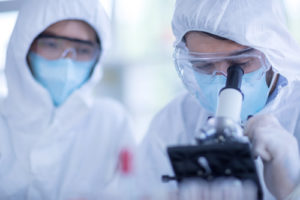The novel coronavirus has caused a global health pandemic, shutting down physical campus operations at higher-ed institutions across the world.
But at the same time as instruction has moved online, colleges and universities are refocusing their efforts to fight COVID-19, the illness caused by the coronavirus.
Many institutions are serving as testing sites, are donating equipment to help healthcare professional, and are conducting research to try and help solve some of the challenges associated with slowing the spread of the virus. Great Value Colleges has compiled a list, updated regularly, of college and university efforts to help in any capacity.
Related content: Adapting to online learning in a pinch (Part 3)
Straight from that list are just 10 of many examples of how institutions are stepping up and using their available resources to help fight the coronavirus:
1. Florida Tech is currently manufacturing about a dozen medical face shields for healthcare workers per day, thanks to its supply of 3-D printers. The shields are being produced through the school’s engineering lab on the Melbourne campus as well as through its off-campus Center for Advanced Manufacturing and Innovative Design. The shields will be donated to healthcare workers and first responders in the area.
2. The Icahn School of Medicine at Mount Sinai is joining several other medical schools across the United States by allowing its graduating class to receive their credentials early. The move is in response to New York’s current shortage of healthcare professionals in the fight against the novel coronavirus. The school says it will continue to provide support service to graduates as they begin their careers amid the public health crisis.
3. Like many areas around the country, Lehigh Valley, Pennsylvania is currently experiencing a shortage of personal protective equipment worn by healthcare providers to keep them from being exposed to COVID-19 while caring for their patients. The engineering division at Lafayette College is doing its part to help by printing PPE using 3-D printers. In addition to face shields, the school is also producing disposable stethoscopes.
4. In partnership with the American Institute of Architects, the Kansas University Institute of Health and Wellness Design has developed an interactive map to help in the identification of potential COVID-19 testing and treatment facilities. The tool is called COVID-19 ArcMap and is designed to promote efficiency amid the urgent public health crisis.
5. Researchers at Washington University School of Medicine in St. Louis are launching a clinical trial in patients who have tested positive for COVID-19 but who are not sick enough to be hospitalized. The trial is investigating whether the antidepressant medication fluvoxamine, which is currently used to treat patients with obsessive-compulsive disorder (OCD), can be repurposed for COVID-19. The drug is thought to reduce the onset of a second phase of COVID-19 infection: a life-threatening overreaction of the immune system that leads to what’s called a “cytokine storm.”
6. Innovative students at New Mexico State University are building a new type of protective gear for healthcare workers on the front lines of the battle against the novel coronavirus. The device is called a COVIDBox and would provide an extra layer of defense against potential COVID-19 exposure. Donations are being accepted to help fund the necessary supplies for the production of the COVIDBox.
7. In response to the ongoing COVID-19 crisis, the Urban Systems Lab’s (USL) diverse team of researchers, climate scientists, and designers at the New School have come together to launch a new COVID web resource that leverages data visualization and spatial analysis to explore key questions on the intersection of social inequity, healthcare, and vulnerabilities to COVID-19 and climate change.
8. Researchers at the University of Colorado-Boulder’s Department of Molecular, Cellular, and Developmental Biology (MCDB) are working on a diagnostic tool that could lead to early detection of a coronavirus infection. Once refined, an advanced prototype of the device—called the SickStick—will be sent to the FDA for approval. The SickStick has the potential to detect COVID-19 even before symptoms are present, thereby preventing the spread of infection that occurs before patients know they’re sick.
9. Recognizing the economic impact of the pandemic, the University of Denver is helping laid-off workers find new job opportunities through a project called Colorado COVID Corps. The school has already forged partnerships with over a dozen other universities to identify shortage areas and essential job openings. The group also has plans to offer job training.
10. Researchers at the University of Southern California’s Price School of Public Policy are partnering with the Los Angeles County Public Health to conduct an antibody study. The study could reveal what percentage of the population could have immunity to COVID-19, thereby helping communities restart their economic activities. It could also shed light on the effectiveness of social distancing measures to slow the spread of the virus.
- Are AI skills more important than degrees? - May 2, 2024
- Report forecasts a ‘surge’ in GenAI adoption - April 26, 2024
- Where are microcredentials today–and where are they going? - April 22, 2024

